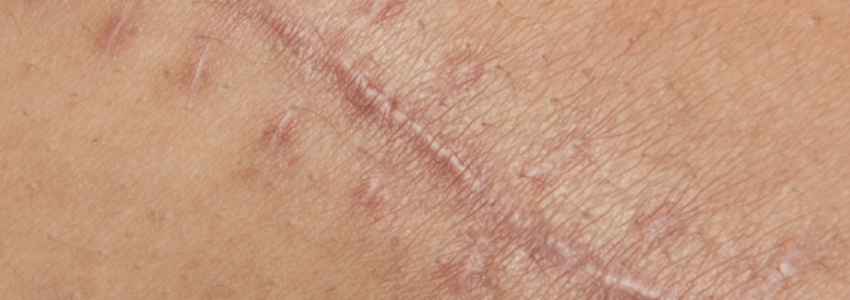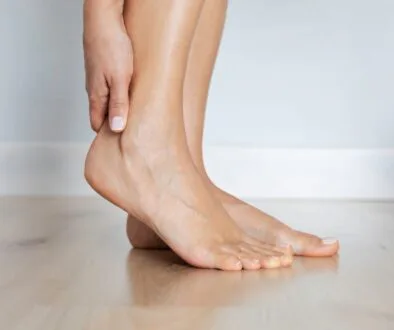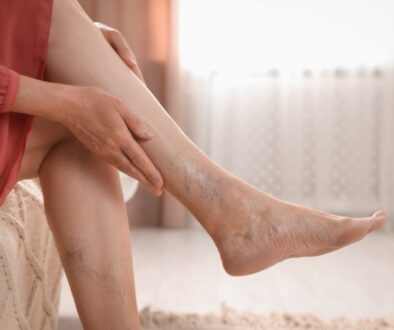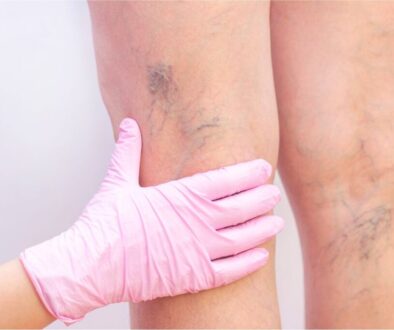How to Minimize Breast Reduction Scars

Published February 4, 2022
Breast reduction is a surgical procedure that involves removing extra tissue and skin to reshape and reduce the breasts. The number, size, and placement of incisions during breast reduction surgery vary according to the procedure performed.
Breast reduction scars typically seem red and lumpy for several weeks as incisions heal. However, over time, scars should diminish and flatten. By following your doctor’s care recommendations, you can decrease the appearance of breast reduction surgery scars. Learn more about how scars occur and how to heal them after breast reduction.
Why Does Scarring Happen?
Scars form as a result of an accidental or surgical wound’s natural healing process. The wound induces the formation of a protein called collagen near the damaged tissue, which aids in healing and strengthening the wound. However, collagen degrades with time, and the scar flattens out. Moreover, some scars are more visible than others. Several factors contribute to the appearance of scars, including the following:
- Delayed healing – Scars become increasingly noticeable as the wound heals.
- Age and skin type – Scars are less evident in the elderly than in younger people. Moreover, individuals with darker complexions are more likely to develop more prominent scars than others.
- Scar age – New scars, also referred to as immature scars, are usually red, elevated, and hard. The scar fades, relaxes, and flattens as it ages, and the collagen degrades. This process can take up to a year.
- Major damage – When your skin is severely wounded, the scar will be more visible. Usually, this is not an issue with breast reduction surgery.
While many of these contributing factors are beyond your control, there are steps you may do to minimize the appearance of scars on your breasts following reduction surgery.
Types of Breast Reduction Scars
The type and size of the breast reduction scar depend on the type of surgical technique used. The two most common types of breast reduction scars are:
Lollipop Scar
As its name suggests, this type of scar is shaped like a lollipop. The shorter-scar technique in breast reduction surgeries creates this type of scar.
The surgeon creates an incision around the border of your areolas. Then a vertical incision is made below your areolas, running right down to the crease under your breasts. Once the incisions are made, the excess fat, tissues, and skin are removed before the surgeon closes it again. The resulting scar has a round top with a vertical line under it, hence the name.
Since the incisions are minimal, the scars are less noticeable. They are also contained in areas of your breast that can easily be hidden with a swimsuit.
This type of technique is usually performed on women who want to go down a single cup size.
Anchor Scar
The anchor scar is a result of the larger-scar technique. Unlike the shorter-scar technique, this requires three incisions:
- around your areola
- a vertical one running from the bottom of your areola down to your breast crease
- a horizontal or slightly curved one along the lines of your breast crease
- The resulting scar, as you can imagine, is shaped like an anchor – hence the name.
Larger-scar techniques are generally reserved for women with sagging or asymmetrical breasts. It’s also more suitable if you want to go several cup sizes down.
But like the lollipop scar, this can easily be hidden even with skimpy clothing.

Caring For Breast Reduction Scars
Long before the incisions made during a breast reduction become scars, you should follow your surgeon’s post-care instructions.
Ensure that you continue to wear your chest bandages and surgical bra for the first few days after surgery. Following this, you will most likely see your surgeon for a follow-up appointment. They’ll advise you on how to care for your skin during the healing process.
Once the wounds are closed, you may like to try specific scar-minimizing procedures during the healing process (but consult your physician first!). Again, your physician may recommend appropriate techniques.
Scar Massage
A scar massage is a treatment that utilizes gentle fingertip strokes. First, vertically and then horizontally, gently massage your scar. Additionally, you should massage the scar in circular motions. This technique is said to aid in the growth of collagen and flexibility while simultaneously alleviating discomfort.
Scar massages should begin approximately two weeks after surgery, according to the Moffitt Cancer Center. Daily massages lasting ten minutes each are excellent. This procedure may be repeated up to three times per day.
Corticosteroid Cream/Injection
A 2019 study on post-cesarean scars revealed that corticosteroid cream could significantly reduce raised scars. Another clinical trial in Turkey suggests that corticosteroid cream works better than silicon gel in reducing scars.
This is probably because steroids like corticosteroids break the bonds between collagen fibers. This reduces the amount of scar tissue under the skin, which, in turn, reduces the size of the scar.
Embrace Dressings
Embrace dressings are FDA-approved bandages that are used soon after surgical incisions are closed. These are intended to assist in drawing the borders of your skin together, so expediting the healing process. Additionally, Embrace dressings contain silicone and can be worn every day for up to a year.
A 2015 study examined the effects of Embrace dressings on 36 individuals who had just undergone abdominoplasty. After 12 months, the researchers saw a considerable reduction in scarring. Similar research on Embrace for breast reduction, on the other hand, is limited.
Scar Gels or Silicone Sheets
Scar gels and silicone sheets are over-the-counter scar treatments. Silicone sheets are silicone-coated bandages; their goal is to moisturize the scarred area to assist the skin in becoming more flexible. Silicone sheets may be beneficial immediately following surgery since they can also aid with itching, pain, and other discomforts.
Scar gels can be used to help minimize the appearance of new or old scars. Scars may fade in color and even reduce in size over time. Your doctor may advise you to begin using a scar gel immediately after the incision heals. Furthermore, scar gels must be used daily to attain the desired outcomes. Also, this could take several months.
Sunscreen
Daily sunscreen application is critical, even if your breast scars are not immediately exposed to the sun. UV rays have the potential to discolor newly formed scar tissue following surgery. As a result, this will darken the scars compared to the rest of your skin, making them more visible.
According to the American Academy of Dermatology, broad-spectrum sunscreen with a minimum SPF of 30 is recommended.
Fractional Lasers
If your scars are very black or thick long after they have healed, the fractional laser may be an option. This procedure utilizes tiny lasers that may treat huge sections of the skin simultaneously. Additionally, they target the upper (epidermis) and middle (dermis) layers of skin, ensuring that scars are removed completely. Following treatment, the treated scar momentarily turns bronze before healing.
You may require additional treatments every two months. Once your breast reduction scars have healed, fractional lasers may be employed. This eliminates the possibility of problems such as post-inflammatory hyperpigmentation.
Fillers
You’ve probably heard of botox and fillers, but you probably never heard of them being used to reduce scars. But botox and collagen fillers work great with sunken and pitted scars by filling the skin underneath them. This results in smoother skin with less noticeable scars.
Laser Therapy
Laser therapy is usually reserved for large and severe scars. It works in two ways. First, it removes the outer layer of the damaged skin to smooth out the scar’s appearance. Then it targets blood vessels in the scar tissue to reduce its redness.
Cryotherapy
Cryotherapy is more suited for small keloid scars. It works by inserting a needle into the scar tissue to deliver nitrogen vapor to its core. This freezes the scar inside out, making it softer and more flexible.
How to Get The Scars Removed
Scars can only be removed surgically. These procedures can be carried out by either your cosmetic surgeon or a dermatologist. Unfortunately, scar removal techniques often result in the formation of a new scar in the location of the prior scar. However, the new scars may be smaller, finer, and ideally less apparent.
Punch grafting is one way of scar removal. This surgery is often reserved for really deep scars that are relatively tiny in size but may be numerous and cover a big area.
In addition, it is a technique that involves grafting skin from another place of the body (such as the ears) into the scar that has been excised. As a result, the scar is smoother and shallower. Punch grafting might take up to a week to heal completely.
What the Scar Will Look Like After Breast Reduction
Scarring from surgical incisions appears as a thin, raised line on the surface of the skin. This is referred to as scar tissue. At first, the area seems to be red or pink in color, but the scar will darken and soften as it heals. Your breast reduction scars, after 6 months, may start to diminish. If you have darker skin, you may be more prone to hyperpigmentation or bigger elevated scars such as hypertrophic or keloidal scars.
The appearance will vary depending on the size of the scar. In the latter case, you will have three scars rather than two. Incisions made along the breast crease may be less obvious due to their horizontal form and concealment within the breast crease or bra line.
Additionally, breast reductions scars after 1 year should not be evident when wearing a bikini top or bra anymore. In minimal clothing, some scarring along the breast crease may be seen following an anchor breast reduction.
The Takeaway
Breast reduction scars are unavoidable, but only to a certain extent. With the correct surgeon, post-reduction scarring may be minimal.
Before selecting a plastic surgeon, request a portfolio of their breast reduction work to view before and after photographs. This can provide insight into their level of skill and the depth of scarring following surgery. Lastly, your plastic surgeon can provide you with recommendations on caring for the incision areas to aid in the healing process.
(Related: Best Fake Boobs: How to Achieve Natural Looking Implants?)
We Are A Medical Beauty Spa In Boca Raton Florida
Four Seasons Laser Center is a highly renowned med spa in Boca Raton Florida. Our state of the art equipment is run by highly trained and experienced staff so you can rest assured that you are in good hands. We offer laser hair removal services for your whole body, PDO Threads facelift, safe and effective Plasma Fibroblast skin tightening, and other advanced medical beauty services to help you look your best. Contact us now to book a free consultation.

Fact Checked By Experts
This content has been thoroughly fact-checked by our team of internal experts. For further information regarding the editorial standards we adhere to, please click here.

About The Author
Krizzia Paolyn is a professional writer for several reputable digital magazines and publications. It has always been her passion to share her voice, and at the same time, to encourage other people to speak up. She has a bachelors degree in Psychology.


